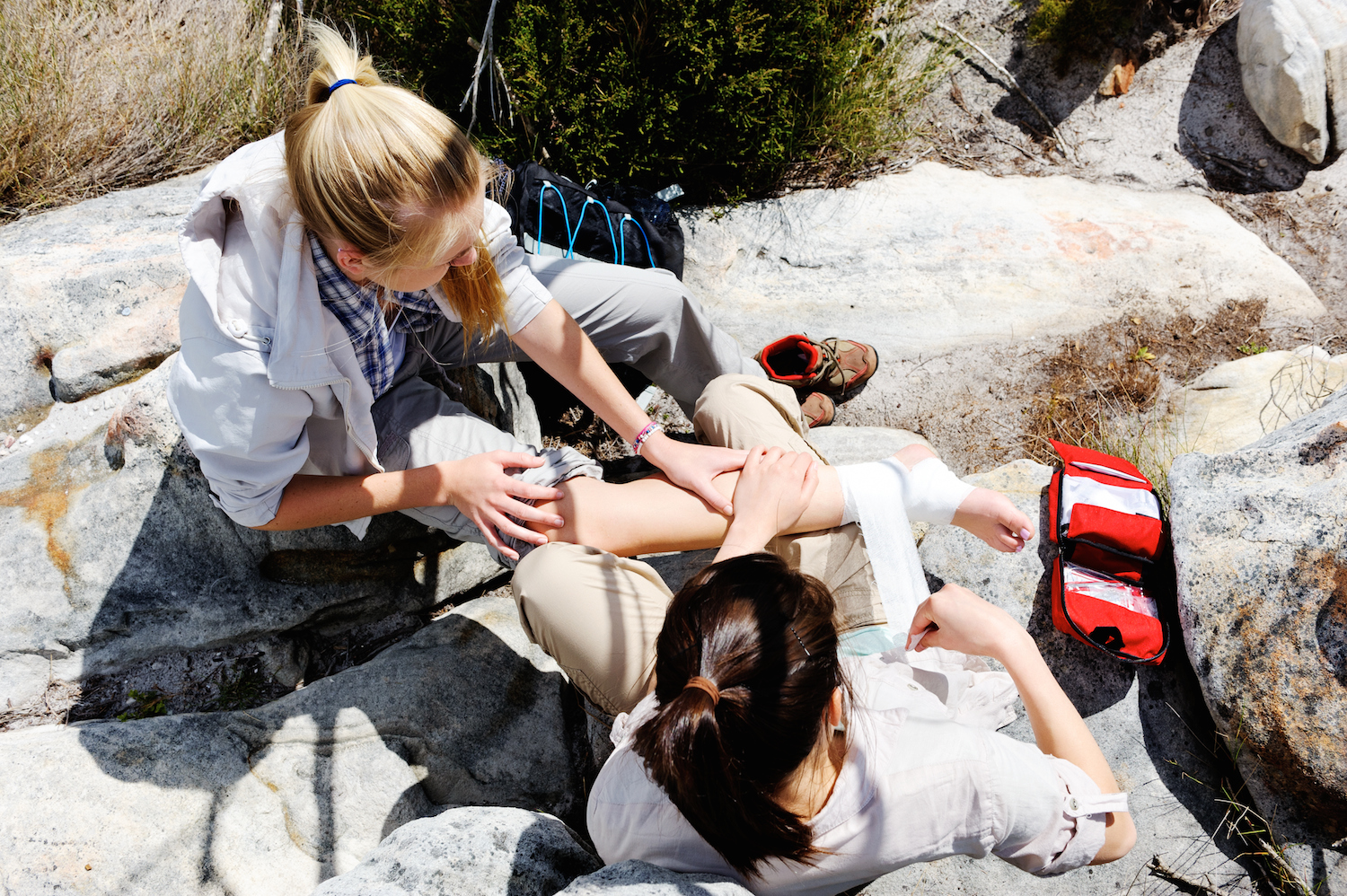Author and environmentalist Edward Abbey once said, “May your trails be crooked, winding, lonesome, dangerous, leading to the most amazing view.”
Any outdoor enthusiast knows the great rewards of adventuring. But with reward comes risk. Those crooked, winding, lonesome trails are filled with rocks, roots and ruts. And to go off the beaten path is to create distance between yourself and the nearest rescue worker.
In one of the only known studies on the topic, the U.S. Centers for Disease Control and Prevention estimated in 2008 that nearly 213,000 people per year are treated for outdoor recreational injuries. Many more never report their injuries.
So what if you become injured in the outdoors, or what if you come across another adventurer who is hurt? Are you prepared to handle an emergency?
In January, Alpine Shop in Kirkwood, Mo., held the first of three “First Aid in the Great Outdoors” classes scheduled for the year. The classes are led by Perry Whitaker, an Alpine Shop employee with more than 20 years of experience in teaching first aid. He is also a graduate of the NOLS Wilderness First Responder program and an avid outdoorsman.
Whitaker covered a wide range of topics during the two-hour class, including first aid kits, Good Samaritan laws, emergency management, and recognizing and responding to the most common recreational emergencies.
Here are three lessons I learned from the class.
Always Be Prepared
“Prevention is better than a cure,” Whitaker said throughout the class. It’s easier to anticipate what may go wrong than to frantically respond to problems in the woods.
Preparation includes carrying a good first aid kit, of course. Whitaker provided lists of supplies to consider when putting together a kit.
But being prepared also means thinking about what might go wrong.
The most common health emergency in the outdoors is dehydration. A loss of just 2% of body fluids equals about a 20% reduction in strength. You may think that a hydration pack is enough for your day hike, but keep in mind that the bite valves can leak (which has happened to Whitaker, by the way).
Carrying backup water and a water purification method ensures that you will not become dehydrated. Iodine tablets, filters and small cooking stoves are all portable and low-cost options.
While dehydration is the most common emergency, most outdoor recreation-related deaths are from hypothermia. So what if an unexpected storm hits and the temperature falls? Do you have enough dry clothing to stay warm, and do you know the best ways to warm the body?
Or what do you do if someone in your party sustains a head and neck injury, but you only have Band-Aids?
According to Whitaker, you may need to ask yourself, “What would MacGyver do?”
Emergency Management
On TV, secret agent MacGyver was well known for using everyday objects in extraordinary circumstances (like disarming a bomb with only a gum wrapper and a ballpoint pen spring).
When you’re in the woods, you may need to look around to see what’s available to help an injured person. Whitaker, for example, once stabilized a neck injury victim by lying him on the ground and placing a large rock on either side of his head.
These may seem like extreme situations, but they happen even to experienced adventurers. Thinking about emergencies in advance may help you to know what supplies you are missing in your first aid kit, or if you need special training for your favorite activities.
“This is not a medical class — it’s an emergency management class,” Whitaker reminded us repeatedly. That’s not to say that the class lacks technical instruction. Whitaker is well versed in medical emergencies from years of working in the healthcare industry. I tested my newly acquired knowledge after the class by taking a basic first aid test online and passed easily.
But most of us are not doctors, and even those who are lack the equipment and supplies that they’d have at a hospital or office. A goal for the class is to help attendees feel more comfortable tending to patients until they can receive assistance from trained medical professionals.
When faced with emergencies in the wild, remember the three Cs: Check, Call, Care. Always check the scene for safety first and call 911. Only then should you perform basic first aid as needed until first responders arrive (and keep in mind, it could take a while).
Protect Yourself First
If you see someone who needs help in the outdoors, help them. If someone is out of water and you have extra, it’s good karma to share. And if you wander upon someone who is hurt, ask if you can help (in case you’re wondering, you are protected by Good Samaritan laws as long as you don’t charge for your services).
But don’t put yourself in unnecessary danger to help a victim.
“Whatever got the patient wants to get you,” Whitaker cautioned. If the injured party was stung by a colony of hornets, the hornets will likely sting you. If someone falls while trying to hike down a steep bluff, it may be hazardous to try to reach them.
If you’re not sure it’s safe to help, call 911 and tell the person that help is on its way.
“Are you scared yet?” Whitaker asks the class after nearly two hours of discussing cringe-worthy scenarios.
Yes, I’m a little bit scared. But a little healthy respect for the outdoors never hurt anyone. And, as Abbey implies, the danger is what makes every adventure a little more rewarding.
Author: Kim Yawitz is a registered dietitian and freelance writer who enjoys trail and obstacle course races, paddling and Crossfit. You can read more of her work at dietvsdisease.com and in the St. Louis Track Club newsletter.


Leave A Comment